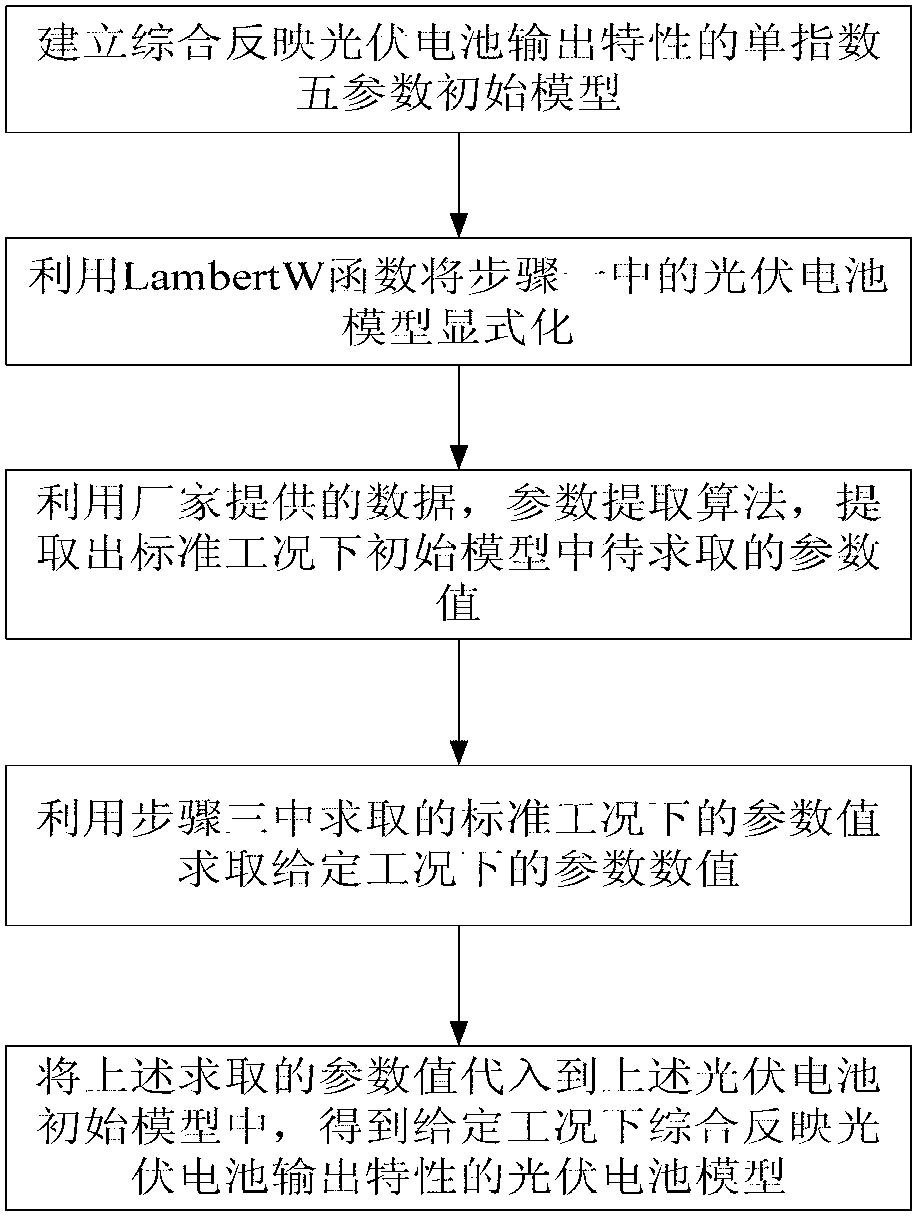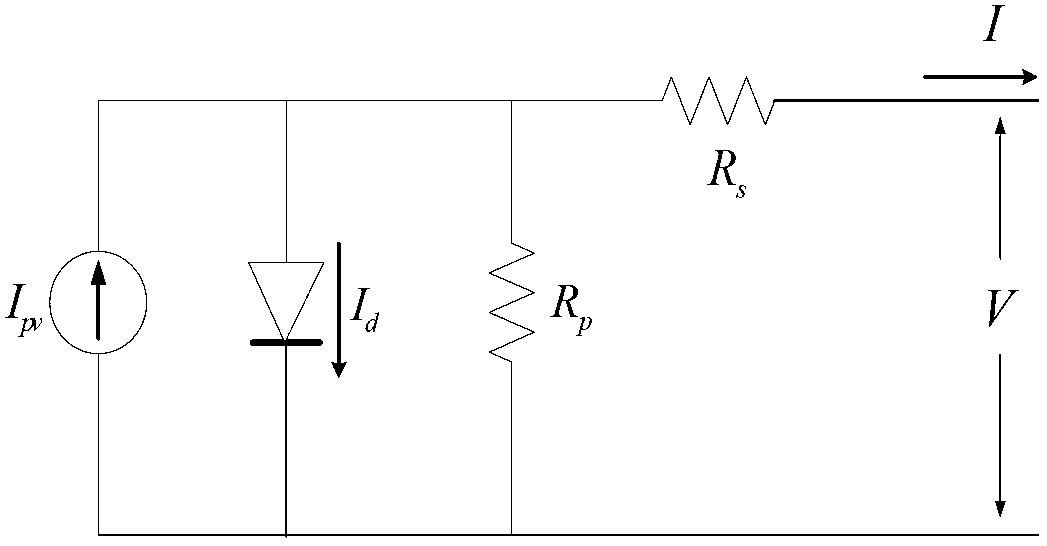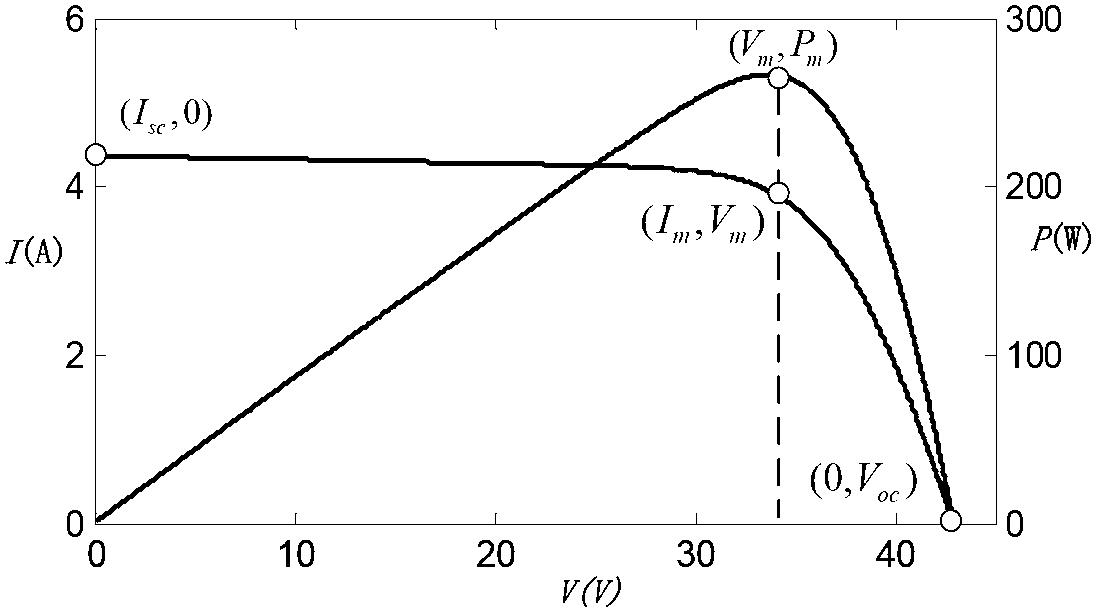Photovoltaic cell output characteristic modeling method
A photovoltaic cell and output characteristic technology, applied in the direction of electrical digital data processing, special data processing applications, instruments, etc., can solve problems such as large data and inaccurate photovoltaic cell models
- Summary
- Abstract
- Description
- Claims
- Application Information
AI Technical Summary
Problems solved by technology
Method used
Image
Examples
Embodiment Construction
[0069] The preferred embodiments will be described in detail below in conjunction with the accompanying drawings. It should be emphasized that the following description is only exemplary and not intended to limit the scope of the invention and its application.
[0070] The specific steps of the modeling method are:
[0071] Step 1: Establish a single exponential 5-parameter initial model that comprehensively reflects the output characteristics of photovoltaic cells, wherein the 5 parameters in the above initial model are all values to be obtained.
[0072] The equivalent circuit of a single exponential 5-parameter model of a photovoltaic cell is as figure 2 shown, according to figure 2 Available:
[0073] I = I pv - I 0 [ exp ( V + R s ...
PUM
 Login to View More
Login to View More Abstract
Description
Claims
Application Information
 Login to View More
Login to View More - R&D
- Intellectual Property
- Life Sciences
- Materials
- Tech Scout
- Unparalleled Data Quality
- Higher Quality Content
- 60% Fewer Hallucinations
Browse by: Latest US Patents, China's latest patents, Technical Efficacy Thesaurus, Application Domain, Technology Topic, Popular Technical Reports.
© 2025 PatSnap. All rights reserved.Legal|Privacy policy|Modern Slavery Act Transparency Statement|Sitemap|About US| Contact US: help@patsnap.com



